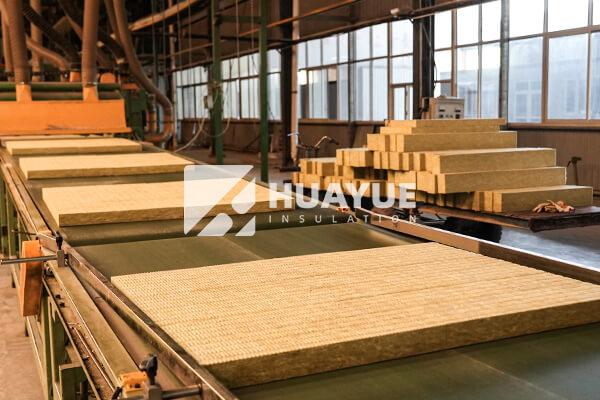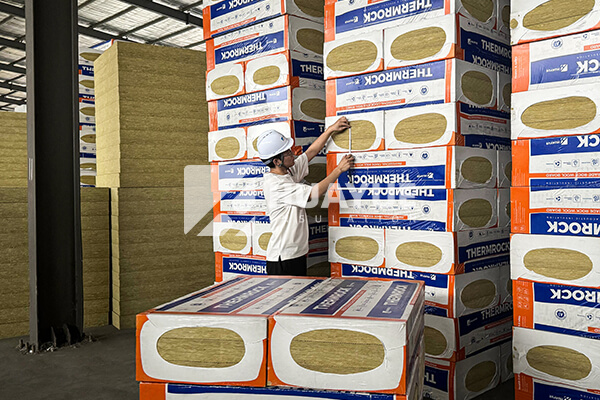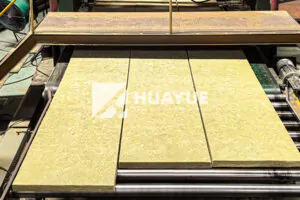Is mineral wool a good insulator?
People worry about high heating bills and poor comfort in buildings. Everyone wants a solution that keeps rooms warm and saves money without complicated installation.
Mineral wool is an excellent insulator because it traps air between its fibers, making walls and roofs resistant to temperature changes. This helps keep buildings warm in winter and cool in summer.

Some people are not sure if mineral wool can really make a difference for their property. I have found that choosing the right insulation always starts with looking at performance, price and application. There’s so much demand for effective, cost-saving, and reliable solutions—especially in commercial and industrial sectors.
Advantages and Disadvantages of Mineral Wool Insulation?
Some assume insulation is the same everywhere. But the details matter—performance changes with different materials. Not all insulators solve every problem.
Mineral wool insulation has fire resistance, great soundproofing ability, and does not absorb water. It also stays strong over time. However, mineral wool can cost more upfront and is heavier than some other insulations.

Breaking Down the Pros and Cons of Mineral Wool
When I compare insulation choices, I think about what really matters for long-term use. Mineral wool has key advantages. It resists fire better than many materials, which helps keep people and property safe. It does not absorb water, so moisture cannot cause hidden damage. The structure blocks noise, making workspaces and homes quieter.
These are strong advantages, but there are a few things to consider before making a decision. Mineral wool is heavier than glass wool. That sometimes means installation takes longer or needs more support structures for large projects. It can cost more at first too. However, the price is competitive, especially from suppliers like HUAYUE, which offer wholesale and OEM options for commercial and industrial buyers.
Here is a simple breakdown of the pros and cons:
| Feature | Benefit | Drawback |
|---|---|---|
| Fire Resistance | High | None |
| Moisture Resistance | Excellent (non-absorbent) | None |
| Soundproofing | Great | None |
| Durability | Long-lasting | Heavier |
| Cost | Competitive at HUAYUE | Can be higher than glass wool |
From my experience, the advantages matter a lot in projects that face fire risks, humidity, or noise issues. The drawbacks are small when you choose reliable partners and plan well for installation.
Will mold grow on mineral wool insulation?
Mold is a worry in many buildings. Some insulation materials trap moisture and develop mold, while others stay dry and safe.
Mineral wool insulation does not support mold growth because it does not absorb water, making it a safe choice for damp environments.

Understanding Why Mold Doesn’t Affect Mineral Wool
Whenever I speak with plant engineers, mold is one of their main questions. Mold will only grow if water gets into the insulation, but mineral wool’s structure does not soak up water. Even in high humidity, mineral wool stays dry, which keeps surfaces mold-free. This reduces maintenance costs and prevents health problems.
I’ve seen facilities where older insulation led to mold and expensive repairs. Switching to mineral wool solved those problems fast. HUAYUE’s mineral wool comes from strict production lines that guarantee uniform quality and lowmoisture content. There’s little risk of mold, even on chemical tanks where condensation is common. In every inspection I’ve done, mineral wool stayed clean and solid, saving clients time and worry.
Here is a simple look at how mineral wool performs compared to other materials:
| Material | Water Absorption | Mold Growth Risk |
|---|---|---|
| Mineral Wool | Very Low | None |
| Glass Wool | Low | Low |
| Polyurethane Foam | Moderate | Moderate |
| EPS | High | High |
Choosing mineral wool from HUAYUE for industrial tanks or wet areas is a solid move for peace of mind and long-term savings.
Does mineral wool insulation need a vapor barrier?
People often ask if mineral wool requires extra protection. Many insulation types need vapor barriers to stop moisture, but mineral wool is different.
Mineral wool insulation usually does not require a vapor barrier because it is not absorbent; however, it depends on each project’s environment.
Knowing When to Use a Vapor Barrier
When I work on tank projects, I always look at climate and application before making a decision. Mineral wool itself doesn’t absorb water, unlike some foam or fibrous materials. This means it does not trap vapor inside. But every building or tank site is unique. If there’s a risk of water vapor passing through walls, adding a vapor barrier can give extra security.
For cryogenic tanks or chemical plants—like those managed by Hans Müller in Germany—I often recommend a vapor barrier on the warm side of the insulation. It’s a simple way to block vapor, prevent corrosion, and protect metal surfaces over time. In standard applications, such as roof or wall insulation in dry climates, mineral wool can work well without a vapor barrier.
Here’s a table to guide vapor barrier use:
| Application | Vapor Barrier Needed? |
|---|---|
| Cryogenic Tanks | Yes |
| Chemical Tanks (humid areas) | Yes |
| Standard Walls (dry areas) | No |
| Roofs (dry climates) | No |
Contact HUAYUE for advice. We help customers select the best configurations for their insulation projects.
How long will mineral wool insulation last?
Longevity is essential. Customers want solutions that last years without extra cost or hassle.
Mineral wool insulation can last for decades, often over 30 years, thanks to its durable structure and resistance to moisture and fire.
Why Mineral Wool Is a Long-Term Solution
I often check old installations. Those using mineral wool almost always last longer than other materials, even in harsh conditions. The fibers do not rot, break down, or lose insulation ability over the years. This means lower maintenance costs and fewer replacements.
I trust HUAYUE’s mineral wool because of its ISO-certified production, precise quality checks, and consistent structure. This is why many large-scale industrial sites and commercial buildings choose mineral wool for peace of mind. In my experience, well-installed mineral wool insulation keeps tanks and buildings energy efficient for 30 years or more. Even after long service, performance rarely drops.
Here’s a table showing lifespan estimates:
| Material | Expected Lifespan | Maintenance Needs |
|---|---|---|
| Mineral Wool | 30+ Years | Very Low |
| Glass Wool | 20-30 Years | Low |
| Polyurethane Foam | 10-20 Years | Moderate |
HUAYUE’s offer of competitive pricing makes long-term solutions affordable and reliable for every project.
Conclusion
Mineral wool insulation is safe, lasts long, resists mold and fire, and is easy to use in many projects.
You may also be interested in:
Ready to Get Started?
Get in touch with our experts for personalized solutions tailored to your needs.
Get Free QuoteLatest Articles

Glass Wool Fire Rating: How Safe Is Your Insulation?
Dec 25, 2025
Let's Work Together
Ready to take your business to the next level? Get in touch with our team of experts and let's discuss how we can help you achieve your goals.
Get Free Solutions






